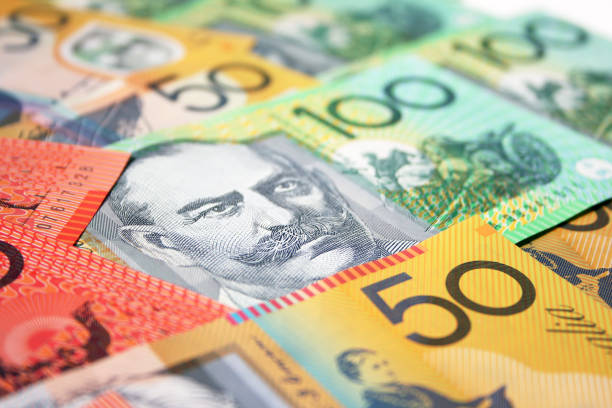
AUD/USD falls sharply below 0.6400 as the RBA delivers a less-hawkish interest rate guidance.
RBA Bullock was confident about easing upside risks to price pressures.
Investors await the US inflation and the Australian employment data for November.
The AUD/USD pair plunges below the key support of 0.6400 in Tuesday’s European session. The Aussie pair weakens as Reserve Bank of Australia (RBA) Governor Michele Bullock delivered a less-hawkish interest rate guidance after leaving its key Official Cash Rate (OCR) unchanged at 4.35% for the ninth meeting in a row.
Michele Bullock remained slightly confident about inflation returning to the bank’s target of 2%. “Upside inflation risks had eased but not gone away,” Bullock said. When asked about whether the RBA will cut interest rates in the February meeting, Bullock said that the decision would be data-dependent but was confident that wages and demand are slowing.
Before the RBA’s policy decision, analysts at ANZ and Westpac predicted the RBA to start reducing interest rates from May 2025.
This week, investors should brace for more volatility in the Australian Dollar (AUD) as the domestic employment data is scheduled to be released on Thursday.
Meanwhile, the US Dollar (USD) rises ahead of the United States (US) Consumer Price Index (CPI) data for November, which will be released on Wednesday. The inflation data will influence market speculation for the Federal Reserve’s (Fed) interest rate action in the policy meeting on December 18.
There is an almost 86% chance that the Fed will reduce interest rates by 25 basis points (bps) to 4.25%-4.50%, according to the CME FedWatch tool.
Australian Dollar FAQs
One of the most significant factors for the Australian Dollar (AUD) is the level of interest rates set by the Reserve Bank of Australia (RBA). Because Australia is a resource-rich country another key driver is the price of its biggest export, Iron Ore. The health of the Chinese economy, its largest trading partner, is a factor, as well as inflation in Australia, its growth rate and Trade Balance. Market sentiment – whether investors are taking on more risky assets (risk-on) or seeking safe-havens (risk-off) – is also a factor, with risk-on positive for AUD.
The Reserve Bank of Australia (RBA) influences the Australian Dollar (AUD) by setting the level of interest rates that Australian banks can lend to each other. This influences the level of interest rates in the economy as a whole. The main goal of the RBA is to maintain a stable inflation rate of 2-3% by adjusting interest rates up or down. Relatively high interest rates compared to other major central banks support the AUD, and the opposite for relatively low. The RBA can also use quantitative easing and tightening to influence credit conditions, with the former AUD-negative and the latter AUD-positive.
China is Australia’s largest trading partner so the health of the Chinese economy is a major influence on the value of the Australian Dollar (AUD). When the Chinese economy is doing well it purchases more raw materials, goods and services from Australia, lifting demand for the AUD, and pushing up its value. The opposite is the case when the Chinese economy is not growing as fast as expected. Positive or negative surprises in Chinese growth data, therefore, often have a direct impact on the Australian Dollar and its pairs.
Iron Ore is Australia’s largest export, accounting for $118 billion a year according to data from 2021, with China as its primary destination. The price of Iron Ore, therefore, can be a driver of the Australian Dollar. Generally, if the price of Iron Ore rises, AUD also goes up, as aggregate demand for the currency increases. The opposite is the case if the price of Iron Ore falls. Higher Iron Ore prices also tend to result in a greater likelihood of a positive Trade Balance for Australia, which is also positive of the AUD.
The Trade Balance, which is the difference between what a country earns from its exports versus what it pays for its imports, is another factor that can influence the value of the Australian Dollar. If Australia produces highly sought after exports, then its currency will gain in value purely from the surplus demand created from foreign buyers seeking to purchase its exports versus what it spends to purchase imports. Therefore, a positive net Trade Balance strengthens the AUD, with the opposite effect if the Trade Balance is negative.
* The content presented above, whether from a third party or not, is considered as general advice only. This article should not be construed as containing investment advice, investment recommendations, an offer of or solicitation for any transactions in financial instruments.


